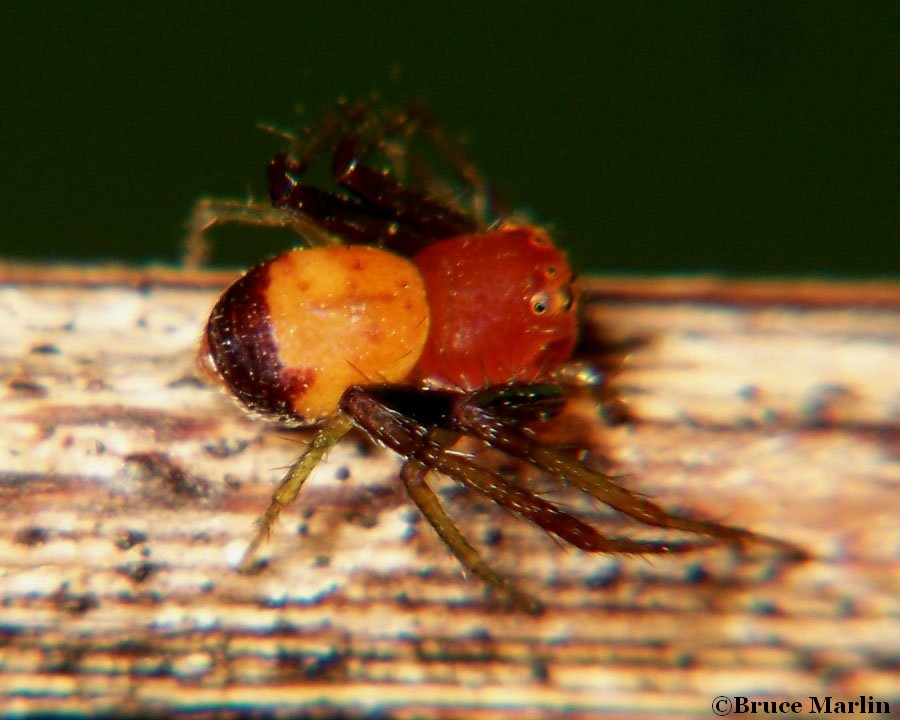Crab Spider – Synema parvulum

This tiny (4mm) crab spider is actively hunting, much like a wolf spider or jumping spider. Crab spiders (often called flower spiders) are known for their oversized front legs and resemblance to the familiar crustacean seafood item. The term flower spider comes from their habit of lying in wait on flowers, much like the assassin bug or numerous other opportunistic predators.
Other species in Thomisidae have brightly colored camouflage which makes them nearly invisible when lying in wait on or near flowers, where they snag unwary insects blundering withing range while nectaring. Their prey includes butterflies, flies, beetles, and bugs.
Like all spiders, crab spiders go through a simple metamorphosis. Young crab spiders hatch from eggs and look like tiny adults. They shed their skin as they grow. Most live for less than 1 year. Females produce hundreds of eggs in the fall, and the offspring hatch in the spring.

Crab spiders do not build webs to trap prey, but are hunters and ambushers. Some species sit on or among flowers, bark, fruit or leaves where they grab visiting insects. Individuals of some species, such as Misumena vatia, are able to change color between white and yellow to match the flower on which they’re sitting. Other species, with their flattened bodies, hunt in the crevices of tree trunks or under loose bark. Members of the genus Xysticus hunt in the leaf litter on the ground. In each case, crab spiders use their powerful front legs to grab and hold onto prey while paralyzing it with a venomous bite.

External Spider Anatomy
References
- William J. Gertsch, PhD. “American Spiders“
- Lynette Schimming, Bugguide.net, “Spider Eye Arrangements“
Spiders Index | Spiders Main | Beetles | Butterflies | Stinging Insects
